
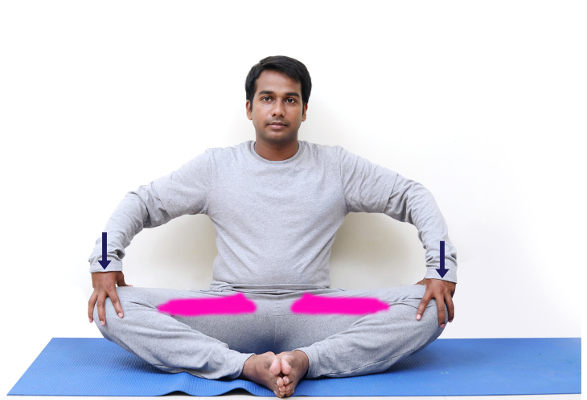
Steps for doing:
- The coloured part is being stretched.
- Hold both legs with hands as shown.
- Hold Both feet's together as shown.
- Push both knees to touch the floor.
- Hold the same position for 10-20 seconds without holding your breath
In this video we are going to stretch Adductor longus muscle
The coloured part is being stretched as shown
The arrow indicates the direction of stretch
- Muscle responsible in hip joint disease, pubis stress symphysitis
- Symptoms refer to hip, thigh, groin, and knee region.
- Symptoms may include pain, numbness, hypersensitivity, altered sensation, irritability and also symptoms related to compression of adjacent blood vessels and nerves
- Commonly related to disease such as pubic symphysitis, obturator nerve entrapement, genitofemoral nerve entrapement, hip joint dysfuction, and others.

Steps for doing:
- The coloured part is being stretched.
- Sit against wall/Lie against wall ,with legs wide open as shown.
- Hold the same position for 10-20 seconds without holding your breath
In this video we are going to stretch Adductor Magnus muscle
The coloured part is being stretched as shown
The arrow indicates the direction of stretch
- Muscle responsible in hip joint disease, gynaecological disease, prostatitis
- Symptoms refer to hip, thigh, groin, knee and with in pelvic region.
- Symptoms may include pain, numbness, hypersensitivity, altered sensation, irritability and also symptoms related to compression of adjacent blood vessels and nerves
- Commonly related to disease such as pubic symphysitis, pelvic pain, anal pain obturator nerve entrapement, genitofemoral nerve entrapement, hip joint dysfuntion, and others.
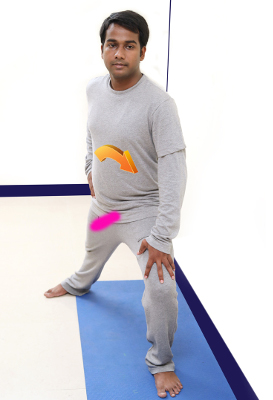
Steps for doing:
- The coloured part is being stretched.
- Position right leg perpendicular to left leg as shown.
- Move right leg and thigh posteriorly behind your body
- Flex upper body(above hip) forward as shown.
- Hold the same position for 10-20 seconds without holding your breath
In this video we are going to stretch Pectineus and Gracilis muscle
The coloured part is being stretched as shown
The arrow indicates the direction of stretch
- Muscle responsible in hip joint disease.
- Symptoms refer to hip, thigh, and groin region.
- Symptoms may include pain, numbness, hypersensitivity, altered sensation, irritability and also symptoms related to compression of adjacent blood vessels and nerves
- Commonly related to disease such as pubic symphysitis, obturator nerve entrapement, hip joint dysfuction, tendinitis, bursitis and others.
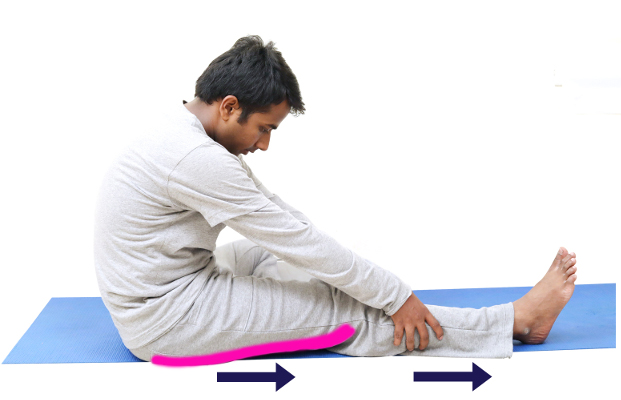
Steps for doing:
- The coloured part is being stretched.
- Right lower limb in straight line.
- Bend towards right leg, with out bending knee as shown.
- Hold the same position for 10-20 seconds without holding your breath
In this video we are going to stretch Hamstring group of muscles
The coloured part is being stretched as shown
The arrow indicates the direction of stretch
- Muscle responsible for sitting ,walking, jumping and bicycling and growing pain
- Symptoms refer to thigh, buttock, leg , knee and hip region.
- Symptoms may include pain, numbness, hypersensitivity, altered sensation, irritability and also symptoms related to compression of adjacent blood vessels and nerves
- Commonly related to disease such as sciatica, knee joint dysfunction, Low back pain, failed back syndrome, osteoarthritis of knee joint, tendinitis, bursitis and others.
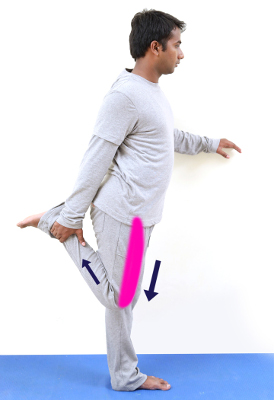
Steps for doing:
- The coloured part is being stretched.
- Stabilize left leg and stand near table.
- Hold the right ankle region with left hand.
- Pull behind and upward as shown.
- Hold the same position for 10-20 seconds without holding your breath
In this video we are going to stretch Quadriceps muscle
The coloured part is being stretched as shown
The arrow indicates the direction of stretch
- Muscle responsible for knee buckling syndrome, locked patella syndrome, buckling hip syndrome
- Symptoms refer to anterior and posterior aspect of knee ,thigh, leg , and hip region.
- Symptoms may include pain, numbness, hypersensitivity, altered sensation, irritability and also symptoms related to compression of adjacent blood vessels and nerves
- Commonly related to disease such as knee joint dysfunction, patellofemoral dysfunction, osteoarthritis of knee, tendinitis and others.

Steps for doing:
- The coloured part is being stretched.
- Stabilize the left leg & lean on the wall as shown.
- Move the right leg behind your body & posteriorly as shown.
- Move upper body(above hip) forward as shown.
- Hold the same position for 10-20 seconds without holding your breath
In this video we are going to stretch Sartorius muscle
The coloured part is being stretched as shown
The arrow indicates the direction of stretch
- Muscle responsible for meralgia paresthetica, knee arthritis.
- Symptoms refer to hip, thigh, buttock, abdominal wall and knee region.
- Symptoms may include pain, numbness, hypersensitivity, altered sensation, irritability and also symptoms related to compression of adjacent blood vessels and nerves
- Commonly related to disease such as medial knee joint dysfunction, hip dysfuntion, tendinitis, bursitis and others.
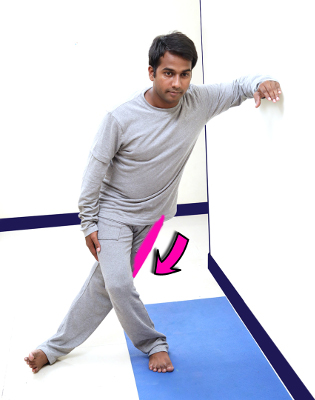
Steps for doing:
- The coloured part is being stretched.
- The coloured part is being stretched.
- Stabilize the left leg & lean on the wall as shown.
- Move the right leg and thigh behind your body & towards left as shown.
- Hold the same position for 10-20 seconds without holding your breath
In this video we are going to stretch Tensor fascia latae muscle
The coloured part is being stretched as shown
The arrow indicates the direction of stretch
- Muscle responsible for meralgia paresthetica
- Symptoms refer to hip, thigh, buttock, abdominal wall and knee region.
- Symptoms may include pain, numbness, hypersensitivity, altered sensation, irritability and also symptoms related to compression of adjacent blood vessels and nerves
- Commonly related to disease such as sacroiliac arthritis, trochanteric bursitis, sacroiliac joint syndrome, tendinitis, bursitis and others.
 Brain and Spine Secrets
Brain and Spine Secrets